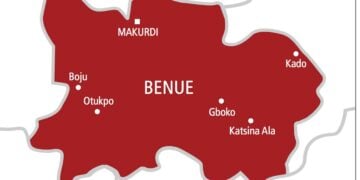In the past, Human Immunodeficiency Virus (HIV) was seen as a death sentence as anyone diagnosed with the virus was expected to die from Acquired immunodeficiency syndrome (AIDS).
Sadly, HIV epidemic in the country maintained a steady increase from 1.8 per cent in 1991 to 5.8percent in 2001, making Nigeria the 2nd highest HIV burdened countries in the world after South Africa.
However, it began a gradual reduction from 5.8per cent to 5 per cent in 2003, 4.4 per cent in 2005, 4.6per cent in 2008, 4.1per cent in 2010 and 3.0 per cent in 2018.
The United Nations Programme on HIV/ AIDS (UNAIDS), had said that Nigeria showed steady progress on increasing access to treatment for people living with HIV, with the adoption of a test and treat policy in 2016.
This measure, the UNAIDS said has further accelerated referrals to treatment facilities for people who test positive for the virus. It noted that from 2010 to 2017, Nigeria almost tripled the number of people living with HIV having access to antiretroviral therapy, up from 360, 000 people in 2010 to more than 1 million people in 2018.
Presently, about 90 per cent of the 1.9 million people living with HIV in the country have been put on treatment, with the support of the U.S. President’s Emergency Plan for AIDS Relief (PEPFAR) and Global Fund.
In a bid to sustain this credit and enhance ownership and sustainability, the country identified it’s priorities in the HIV response which include achieving epidemic control, reducing transmission from mother to child and ensuring quality of care and and strengthening data management.
To effectively address the priorities, the National Agency for the Control of AIDS (NACA), facilitated the re-alignment of the country’s HIV response in collaboration with the Federal Ministry of Health and donor partners.
The alignment has strengthened the government led HIV treatment programme as evidenced by the consolidation of resources from all parties.
With the successful roll-out of alignment 1.0, stakeholders have begun to ask themselves of what needs to be done to make the country’s HIV programme more sustainable and discussions have commenced as to what Nigeria would like Alignment 2.0 to look like.
The director-general of NACA, Dr. Aliyu Gambo, said the alignment is essentially a process that looks at the country’s response and see how gradually this country’s response belong now only to the country, in terms of country’s ownership and sustainability.
He said “With Alignment 2.0, we now want to see more local investment, more local resources coming to support HIV response.
“These local resources must not only come from government, it can come from private sector. And that was the reason for launching HIV Trust Fund of Nigerians at the beginning of this year, in February.
“It is structured to bring more resources that are local into the equation, as government of Nigeria at the center brings in more.
“Under Alignment 2.0, we would want to see more of these investments from the federal government, from private sector, as well as from the State.
“And under Alignment 2.0, we want to give the State more responsibility, we want to put the State in the driver’s seat, instead of having implementing partners, implementing programs at the state, using state structures, we now want state to use its own structure to implement the program, which we believe it is doable.
“At the moment, the implementing partners go into the State, they use the State’s hospitals, they use the State’s structures in terms of Human Resources, health care workers that provide services at the hospital are been used to provide these services, they are not people from outside that use to come, they are the same people within the facility that provide these services, and at the same time, coordinates the treatment as well as prevention services. This is what we want the state to do, going forward.”
The DG explained that the implementing partners would now become the teachers, they will teach and train the state. They will show the state what they do and what they have been doing over the past twenty years, to sustain the response and to provide treatment services to people in different locations throughout the State.
“The state will now use its internal structures to drive that response which the implementing partners would be doing together with them.
“At the first instance they do it together, after a period of one year, the implementing partner will now step aside and serve as technical adviser or technical assistance, providing technical guidance and technical services for the state to continue to drive the response.
“This would continue until we are satisfied that the state are now driving the response and we are getting positive outcomes.
“Once we have this done, then we would want to see more integration-service integration. Meaning you have the health insurance scheme that is suppose to come into equation, you have the primary health care facilities where services are given for Malaria, for TB and for HIV. So we want to integrate this services and see.
“The structures we are using to provide these services remain the same, but in terms of the catchment areas, the number of cases that are sealed, the diseases that are covered, now cut across Malaria, Tuberculosis, or HIV.
“So this is the essence of alignment 2.0 and we believe that by the time we arrive at that, then the country is fully structured for ownership.”
On kick-starting the Alignment 2.0, Gambo said it has already stated because the HIV Trust Fund that was launched early this year was meant to kick-start it, and it has started.
“We are bringing the states into the driver’s seat. In two states, out of the thirty six states, we have already signed an agreement where the state now would be leading.
“So it has already started in a way, but what we are going to bring up in this month would now give us more direction in terms of policy, moderation in terms of how we are going to navigate the alignment 2.0 terrain, for the next three to four years. After which we believe the country would be well positioned in terms of our ability to own the program and to sustain it.”









